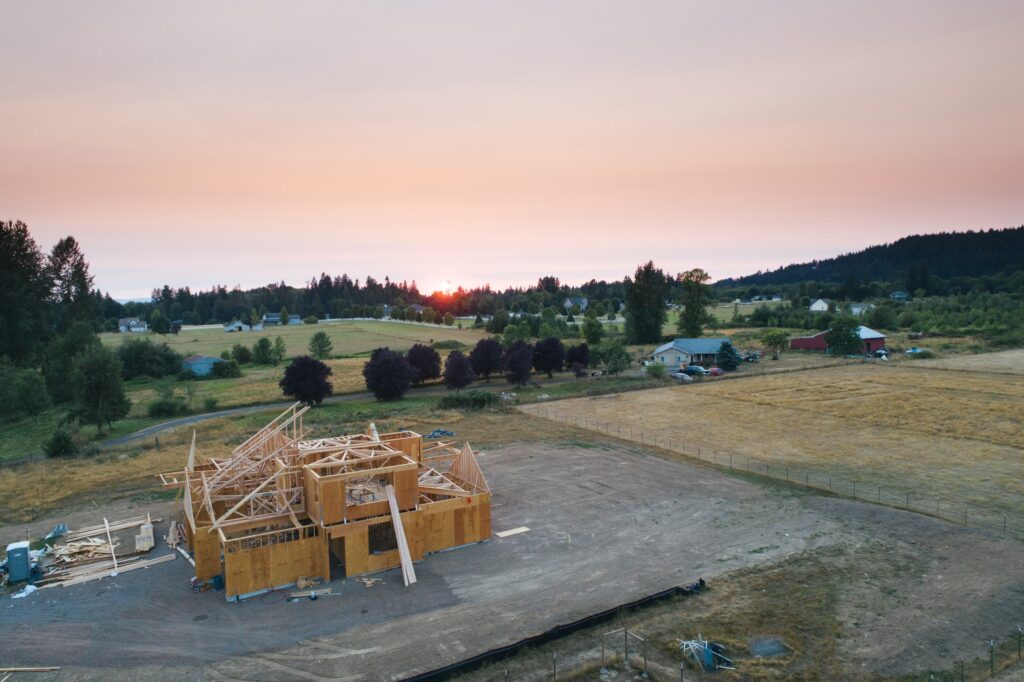
Changing the Zoning of a Property in Los Angeles
If you own a property or are thinking about buying undeveloped land, among the most important aspects of a property is its zoning. The zoning code in a county or state regulates density, parking, building size, land use, lot coverage, and setbacks. When this code is fully implemented, developers will understand how to properly implement the county’s community plan or general plan.
Zoning is necessary to ensure the public’s safety, welfare, and health. These regulations are also able to facilitate compatibility between developments and different types of land uses, which allows for a properly planned community to be formed. Even though zoning regulations are usually strict and must be adhered to by developers, it’s common for a land owner or developer to want to use the land for a purpose that it isn’t zoned for.
While making changes to a zone is challenging, it’s possible to do so with the right approach. However, you will first need to obtain permission before you can go forward with changing the zoning that a property has. Different levels of permission must be obtained depending on how much the development is expected to deviate from current zoning guidelines.
For instance, making a small alteration to the zoning code might only require a basic permission from the city. On the other hand, more expansive deviations could require larger actions by the city. This guide goes into more detail about what it takes to change the zoning that a Los Angeles property has.

Requesting a Zone Change
As mentioned previously, zoning regulates population density, building size, lot coverage, and land uses. Even though zoning guidelines and regulations are prepared over an extended period of time, there’s always the possibility that the existing zone doesn’t accommodate the type of development you’d like to complete. In Los Angeles, zone changes and alterations can be formally initiated by the Regional Planning Commission, the Board of Supervisors, or individual property owners.
If you own a piece of property and would like to use the property for a purpose that isn’t specifically permitted by the current zoning classification, you can initiate a zone change. If you want your request to be approved, it’s essential that the zone change adheres to the city’s General Plan as well as any community or area plans. In the event that the requested change doesn’t match the general plan in question, the request won’t be approved.
While it’s possible for general plans to be amended, public hearings and an extensive study must first take place. The hearings are held in front of the Board of Supervisors. Keep in mind that only four amendments to aspects of a countywide general plan are allowed for each calendar year. With this requirement in mind, you should be able to determine if your request could be approved by the city. Some of the major things that the city will consider when assessing your zone change request include:
- Availability of facilities, access, and public services that serve the necessary development
- Project layout and design
- Physical constraints and land suitability
- Compatibility with nearby land uses
- Overall consistency with the General Plan
- Avoiding “spot zoning” issues
- Possible environmental issues and any mitigation measures
- Project design

Application Procedure, Processing, & Public Hearings
If you believe that your request for a zone change will be approved, you should learn more about what this process entails. The first step of this process involves obtaining fee schedules, zoning information, and the necessary application forms, all of which can be requested if you contact the Department of Regional Planning by dialing (213) 974-6411. Keep in mind that their offices are closed each Friday. Once you request these forms and documents, they will be sent to you in a short period of time.
If the development you’d like to propose includes a land division, you might want to consider scheduling a counseling appointment known as “One Stop”, which will allow you to gain necessary info and details from the Fire Department as well as the Department of Public Works.
The next aspect of changing zoning involves application processing. Once all of the forms have been filled out and any documentation has been gathered, you can contact the Los Angeles Department of Regional Planning to schedule your filing appointment. The planner will look at all of the materials you’ve submitted to make sure that the necessary filing fees and signatures are provided. After the application has been accepted for further review, you will be given a project number.
The application itself is forwarded directly to the necessary processing section. In the event that the processing section determines that the application is complete and all of the proper environmental documentation was included, an official public hearing will be set at a later date. A concurrent hearing can be scheduled if the project includes discretionary permits or a land division.
At this stage of the process, you will be told the date of the hearing as well as the deadline by which notices must be mailed to every property owner within 500 feet from the main property. Notices will also be published in the local newspaper. The purpose of this process is to make sure that the public is aware of the hearing.
Once the public hearing is complete, the Los Angeles Department of Regional Planning will recommended that the zone change request be approved or denied. This recommendation will be handed over to the city’s Board of Supervisors. In the event that the commission provides approval for the zone change, an additional public hearing will occur in front of the Board of Supervisors. This is when the final decision about the zone change request will be made.
Public hearings are conducted by the Department of Regional Planning. These hearings are typically held at the Hall of Records in Room 150. The Hall of Records can be found at 320 W Temple St. in Los Angeles. Keep in mind that the Department of Regional Planning consists of five separate members who have been appointed by the Board of Supervisors.
During any public hearing for a zone change, the applicant is expected to attend along with any representation they have. If you find yourself in this situation, you will be tasked with presenting the details of your zone change request and the development you’d like to begin.
A wide range of documentation can be submitted for a public hearing, which extends to graphics, maps, petitions, and letters. It’s also possible to call on other individuals who can provide support for your proposal. Any neighboring property owners or interested individuals can address the Department of Regional Planning during this hearing. You will then be allowed to make a response to objections that are raised.
Keep in mind that a public hearing can continue past the initial event. In fact, the Department of Regional Planning may schedule a short field trip to look at the property. Once the hearing is officially closed, the Department of Regional Planning will begin preparing a resolution that’s comprised of the findings that the commission has made. In the event that the resolution is adopted by the department, it’s then sent over to the Board of Supervisors.
You’ll find that the public hearings held by the Board of Supervisors are similar to those held by the Department of Regional Planning. The Board of Supervisors will consist of five individuals. All opponents and proponents are provided with an opportunity to express their thoughts about the zone change request.
When the hearing is closed, the Board of Supervisors can provide a decision to modify, deny, or approve the change. If a zone change is approved, an ordinance that denotes this change will be prepared and adopted. This ordinance becomes effective around 30 days following its adoption.

Special Requirements for Specific Zoning Types
Along with the general zoning code requirements, different types of properties can be subjected to extra regulations. For instance, a Specific Plan could apply to the area, which is additive to the general plan and may implement more restrictions on FAR and development height. There could also be ordinances attached to a zone, which may involve building lines that call for more spacious front yards. If ever a project is unable to meet the specific requirements, you could ask the city for relief in this regard.
Zoning Variance
A zoning variance occurs when a property owner asks for sizable changes to their property that aren’t usually allowed by adjusting zoning regulations. A variance can be used to allow for smaller yards, more density, or more height. You should know that the city is unable to grant a variance for any request.
The city planner will need to determine that strictly applying current zoning guidelines is impossible or impractical. They must also find that special circumstances involve lot shape, topography, or size exist. A variance isn’t meant to provide special uses or privileges for the property if the use isn’t consist with properties in the vicinity.
Conclusion
Even though zoning regulations are difficult to change, doing so isn’t impossible as long as your application adheres to the guidelines mentioned above. The process for obtaining a zone change is extensive and time-consuming, which is why it’s important that you know what steps to take and how to avoid delays. Since public hearings must also occur, it’s highly recommended that you have a good understanding of how to present your case to the public. With these tips in mind, you should have everything you need to start this process.

Jason Somers, President & Founder of Crest Real Estate
With over 15 years of professional experience in the Los Angeles luxury real estate market, Jason Somers has the background, judgement and track record to provide an unparalleled level of real estate services. His widespread knowledge helps clients identify and acquire income producing properties and value-ad development opportunities.
Learn more about Jason Somers or contact us.



